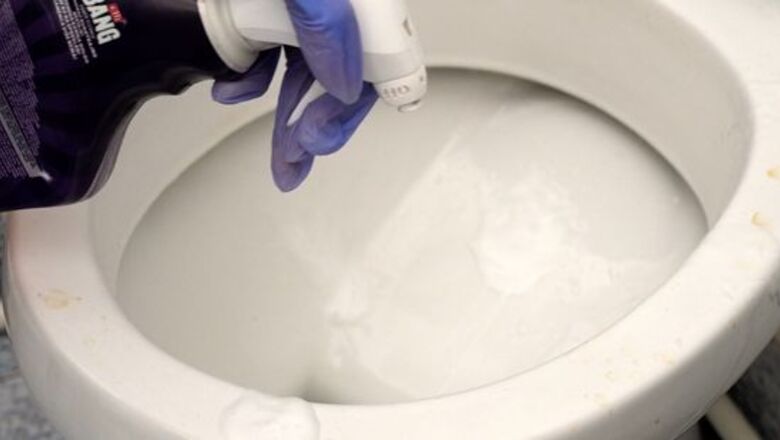
views
Scrubbing the Toilet Bowl
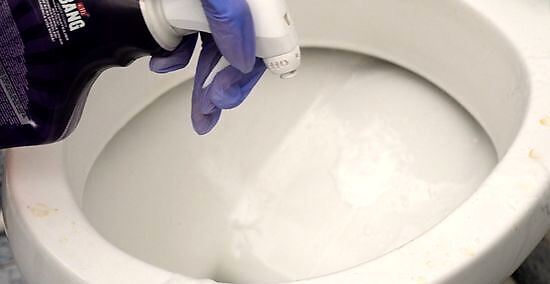
Use a multi-surface chemical cleaner. For best results, choose a cleaner that promises to both disinfect and cut through difficult stains on ceramic surfaces, such as mildew and hard water deposits. Spray or sprinkle the toilet bowl cleaner liberally around the interior of the bowl. Focus on areas with especially heavy staining or mold buildup. You also have the option of treating your toilet with a homemade cleaner made from a combination of ingredients like vinegar, baking soda, borax or hydrogen peroxide. Switch on the overhead fan in the bathroom to keep it well-ventilated and whisk away overpowering fumes.

Allow the cleaning solution to sit for 5-10 minutes. After a few minutes, the cleaner will begin to dissolve stuck-on gunk that won’t come off with a simple brushing. It may be necessary for the cleaner to sit on especially heavy or stubborn stains for an hour or longer, or even overnight. To deal with residue that’s higher up on the sides of the bowl, douse the spot with cleaner, then cover it with a paper towel to hold it in place.
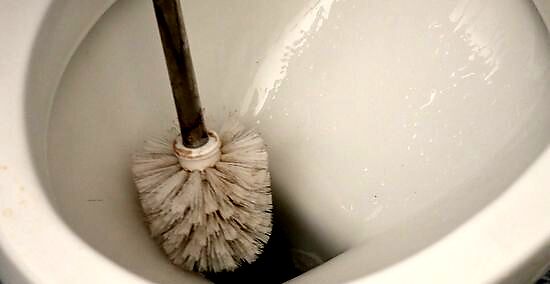
Scrub the inside of the bowl thoroughly. Use a stiff-bristled nylon toilet brush or long-handled scrubber to go over the walls and bottom of the bowl. With a little elbow grease, the stains should come out with ease, leaving behind a polished, sparkling surface. Scrubbing in tight circles will release more grime than using a back-and-forth motion. If you need something a little more heavy-duty to scour unsightly toilet rings with, try a disposable sanding block or pumice stone. Both materials should be perfectly safe on porcelain.
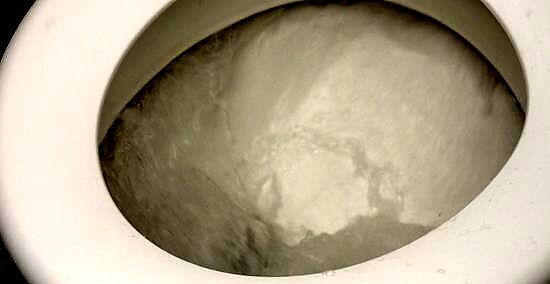
Flush the toilet to rinse it clean. When you’re finished scrubbing, flush the toilet a couple times to run fresh water through the toilet. This will help whisk away any loose debris or dingy water left behind as a result of cleaning. Afterwards, the bowl should be sparkle like new. Deep-clean the toilets in your home roughly once a week, or more frequently if they receive a lot of use.
Clearing Out the Siphon Jets

Turn off the water to your toilet. In order to successfully clean the siphon jets around the inner rim of the bowl, you’ll need to make sure they’re not emitting water. Locate the small water shutoff valve on the wall near the base of the toilet. Rotate this valve clockwise to stop the flow of water to the tank, then flush the toilet to drain it. You’ll now be able to clean the toilet bowl unobstructed. To ensure that the water is completely off, keep turning the handle of the valve until it won’t go any farther. Find a time to unclog your toilet’s siphon jets late at night or during another time when shutting off the water won’t be an inconvenience.
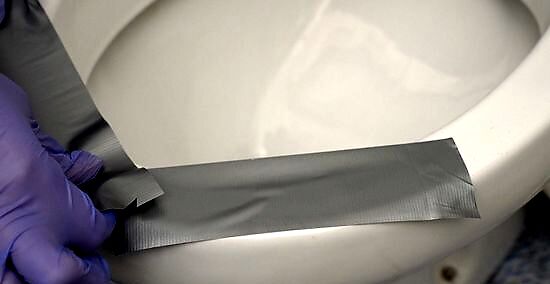
Place duct tape around the rim of the toilet bowl. You’ll be able to find the siphon jets just underneath the toilet’s inner lip. Work your way around the bowl, covering each of the jets with strips of tape. Smooth the tape down with one hand to make sure it will hold. Dab the rim of the bowl dry with a clean towel to help the duct tape stick. You may have use several pieces of tape in order to cover every jet.
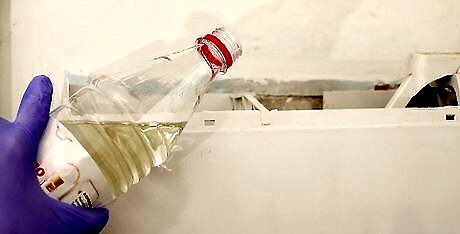
Fill the toilet tank with vinegar. Lift the lid off the tank and set it aside carefully. Add roughly a gallon of pure distilled white vinegar to the empty tank. Replace the lid and let the vinegar sit for 10-20 minutes. As an added bonus, the vinegar will help remove hard water stains from the inside of the tank as well. You’ll need to pour in enough vinegar to submerge the flapper at the bottom of the tank.
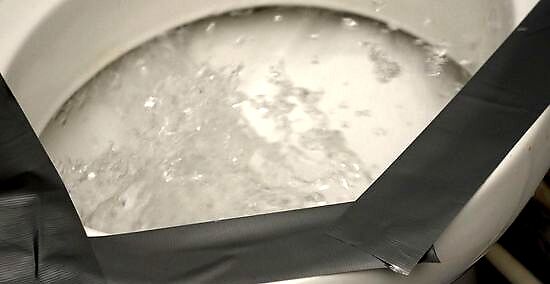
Flush the toilet. As you flush, the vinegar will flow from the tank down into the bowl as usual. Because of the tape, however, it won’t have anywhere to go, and will instead become trapped in the jets. There, it will break down accumulated grime and mineral deposits that prevent the toilet from flushing at full power. If you don’t get a satisfying flush the first time, add a little more vinegar and try again. Wait until the vinegar has had at least an hour to work before turning the water back on.
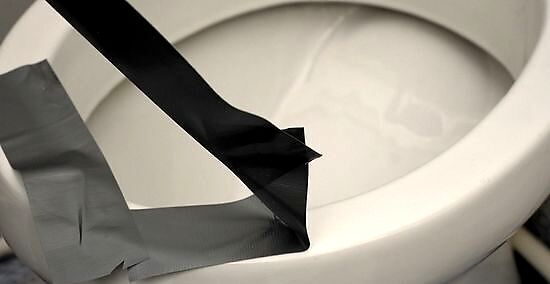
Remove the tape and scrub the jets. After several hours, you can peel off the tape and observe the effects of the vinegar. Chances are, it will have erased most of the gunk clogging the siphon jets. Run a stiff-bristled brush over the outside of the jets to rid them of any lingering residue, then refill and flush the toilet a few times to rinse it. For best results, allow the vinegar to sit in the jets overnight. Clearing the siphon jets is something that needs to be done approximately once a year.
Maintaining a Clean Toilet Bowl

Clean your toilet regularly. The best way to keep your toilet bowl clean is to not let it get out of hand in the first place. Get in the habit of swirling the walls of the bowl with a toilet brush once or twice a day after every few uses, using a squirt of toilet bowl cleaner or a misting with a spray bottle of vinegar as needed. This will cut down significantly on the need for more frequent cleanings. Plan on giving the inside of your toilet a good scrubbing at least once every couple of weeks. Stash some toilet bowl cleaner in a nearby spot so that you’ll always have some on hand.
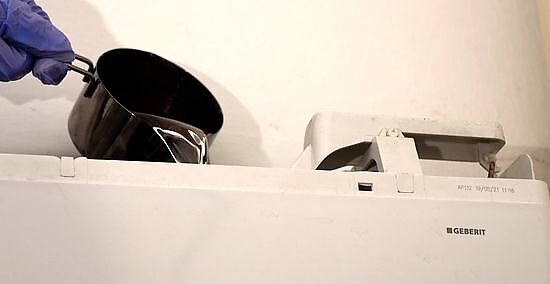
Pour some toilet cleaner into the tank. Most people are already familiar with this simple trick, but it’s one that goes a long way in minimizing the amount of attention your toilet bowl needs. Following a routine cleaning, add a few ounces of liquid toilet cleaner to the tank. The cleaner will run into the bowl with each flush, killing bacteria and eliminating residue even after repeated uses. If you do this consistently enough, you’ll find that there’s hardly anything to worry about when it comes time to clean again. Running toilet bowl cleaner through the tank will also help break down mineral deposits and other gunk collecting in the siphon jets. Toilet cleaners are sold in dissolving tablet form, as well. Simply drop one of these into the tank every so often and go about your day.
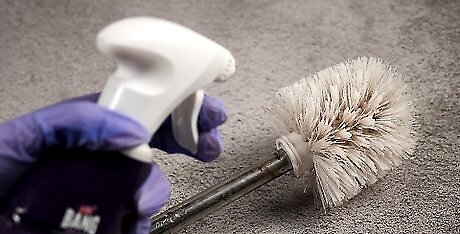
Disinfect your toilet brush. It won’t make a difference how often you scrub your toilet if you’re doing it with a dirty brush. To revitalize a toilet brush that has seen better days, fill the brush holder with a mixture of all-purpose cleaner and water. That way, it you’ll be able to effortlessly sanitize it between uses. Hydrogen peroxide will also provide a useful option for disinfecting toilet brushes that see a lot of action. Replace the toilet brushes in all of your bathrooms once a year, or as soon as they start looking like they’re in bad shape.



















Comments
0 comment